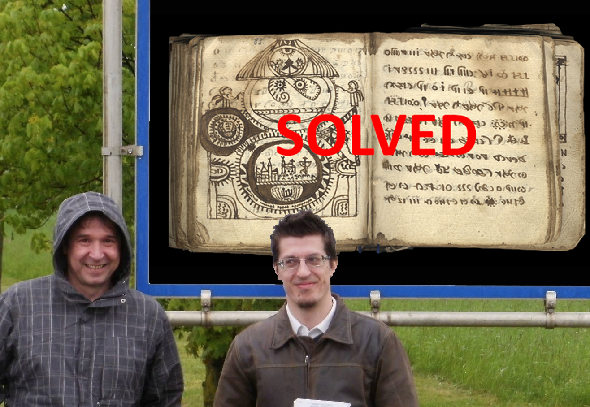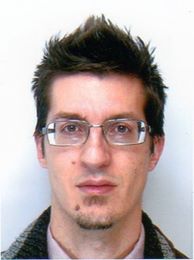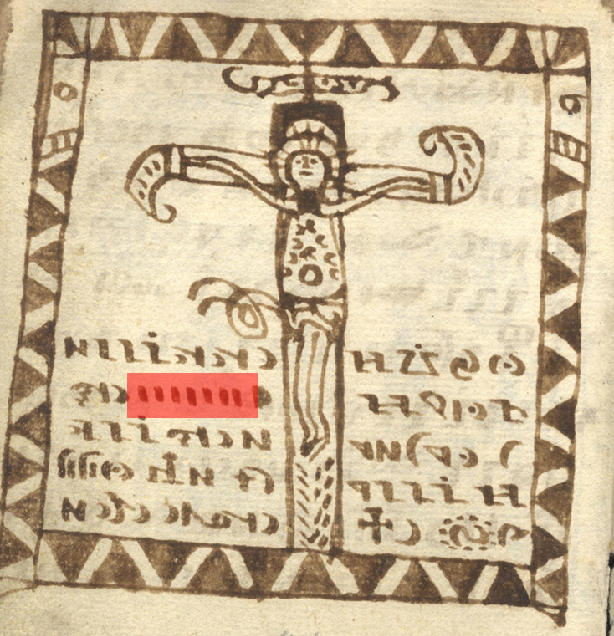The Rohonc Codex, one of the world’s most famous crypto mysteries, appears to have been solved. Here are the details about the solution.
Here is the second part of my FAQ about the recently published solution of the Rohonc Codex.
Who has deciphered the Rohonc Codex?
The solution in question was published by the Hungarian scientists Levente Zoltán Király and Gábor Tokai in the scientific magazine Cryptologia (the following photographs were provided by Levente Zoltán Király).
Zoltán Király …
… was born in 1976. He earned a BSc in computer science and an MA in divinites. He is currently working as a software developer. He has occupied himself with the Rohonc Codex as a hobby since 2005.
Gábor Tokai, …
… born in 1969, is an archaeologist and art historian. He has worked at the Hungarian National Gallery in Budapest since 1999. Tokai has dealt with undeciphered scripts from the age of sixteen.
Király and Tokai started their research on the Rohonc Codex independently from each other. The two met at a conference in late 2010, where Király summarized his results in a lecture. Having acknowledged common results that they had reached independently, they decided to work together. The following picture was taken in Rechnitz (Hungarian: Rohonc), Austria, the town the codex is named for.
What kind of encryption method was used?
According to Király and Tokai’s paper, the text in the Rohonc Codex is encrypted in a code. This means that every word in the ciphertext of the codex stands for a certain cleartext word. To create the text, the author of the Rohonc Codex had to use a (self-developed?) codebook. If Király and Tokai’s claim is correct, it is not possible to decipher the Rohonc Codex based on a letter substitution table.
Codes (especially nomenclators) were quite common in the 16th century. It is therefore not surprising to encounter a code-based encryption in a 16th century document. However, I have never heard of a complete book encrypted this way, let alone one that is 500 years old.
Király and Tokai’s paper doesn’t mention the language the cleartext is written in. They plan to address this topic in a future publication. It is generally possible to read a message written in code without knowing the cleartext language, as long as the meanings of the code words are known.
In addition, Király and Tokai don’t mention if the author of the codex used the code for secrecy or for another reason. I hope, future publications of the two will address this question, too.
What is the content of the Rohonc Codex?
As the pictures (most of them show scenes from the bible) suggest, the content of the Rohonc Codex is Christian in nature. Király and Tokai have found several prayers, Bible stories, and Bible quotes. Most of the text refers to the New Testament. It is an interesting, yet unanswered question why a text of this kind (as far as can be told so far, it doesn’t contain any secrets) was encoded in such a way.
How did Király and Tokai decipher the Rohonc Codex?
Already before Király and Tokai started their work, the two researchers Ottó Gyürk and Miklós Locsmándi had identified numbers in the Rohonc Codex. These numbers follow a system similar (but not equal) to the Roman numbers. The one of this number system is represented by a vertical line. In the following picture seven ones in a row can be seen.
Apart from the numbers, Király and Tokai used words written in the pictures as cribs.







Kommentare (7)